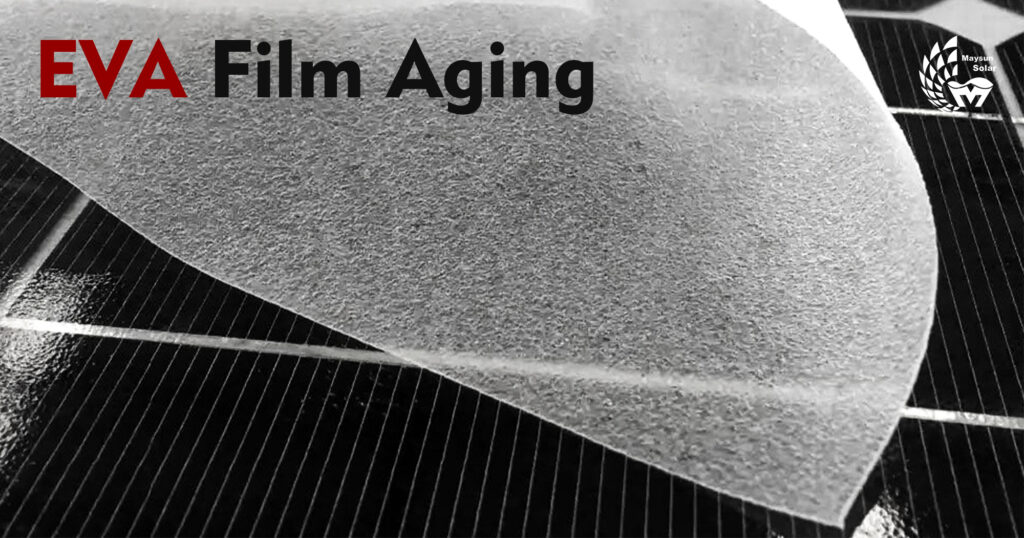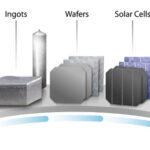The long-term stability of photovoltaic modules is the key to the continuous output of electric energy during the operation period of the photovoltaic system. The chemical stability of polymer encapsulation materials in photovoltaic modules is an important factor in determining the durability of photovoltaic modules.
What are the effects of EVA material aging on the performance of photovoltaic modules?
As the main material of photovoltaic encapsulation film, EVA is of great significance to photovoltaic modules. Once aged, it will not only affect the performance of photovoltaic modules, but also cause fading, delamination and blistering of photovoltaic modules.
1. Fading
During the operation of photovoltaic modules, EVA will undergo “yellowing” and “browning” when exposed to the outdoor environment for a long time. The discoloration reduces the light transmittance of EVA, reduces the photocurrent of the photovoltaic cell, and finally leads to the power loss of the photovoltaic module.
The main reason for this phenomenon is that as the temperature rises, the chemical composition of the EVA packaging material changes under the combined action of ultraviolet light and water penetration, and the color of EVA will gradually deepen, from light yellow to dark brown.
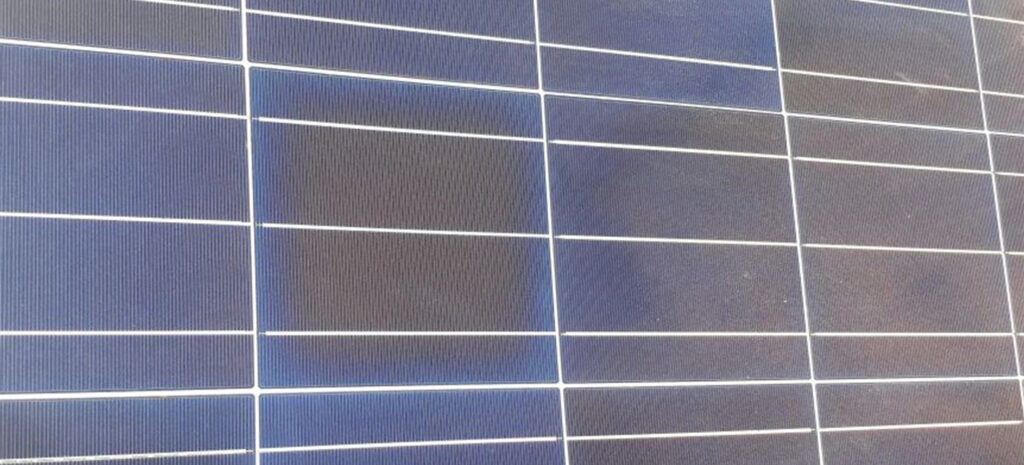
2. Delamination
Degradation of EVA leads to loss of adhesion and delamination occurs, resulting in loss of adhesion between the cover glass and the solar cell or between the solar cell and the backsheet material. The delamination of photovoltaic modules causes increased light reflection, increased water penetration, loss of output power, and damage to the entire system.
There are many factors that lead to delamination. In addition to process factors, the aging of EVA during use is the main reason. The aging of EVA destroys the interface bonds, resulting in the formation of gaps between EVA and other layers. In this process, light, heat, oxygen, and water And other factors play an important role, generally hot and humid climate will accelerate stratification.
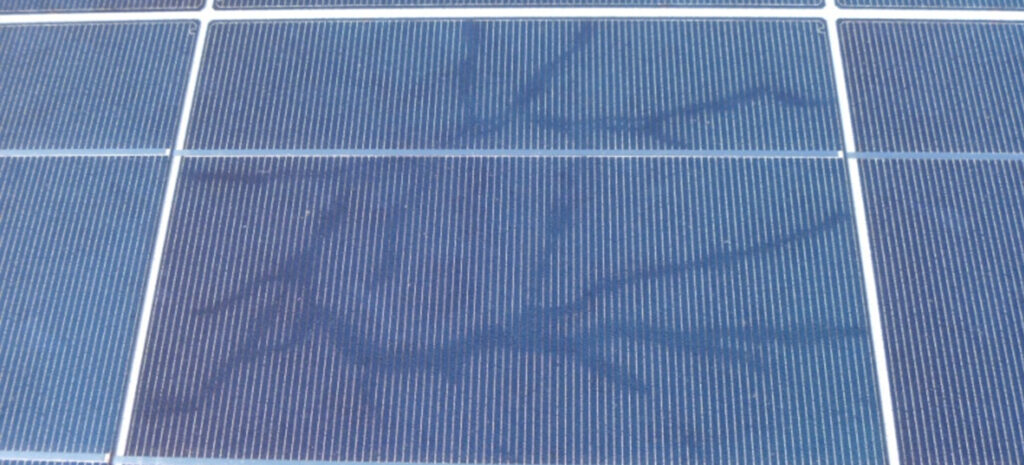
3. Blistering
Blistering is a process similar to delamination, which is caused by the lack of adhesion of EVA and affects a smaller area. Bubbles are created as a result of chemical reactions that release gases that typically appear at the rear of the module and collect in the encapsulation, but occasionally at the front between the glass and the cell. Bubbles often appear in the center of the battery, which is caused by the high temperature inside the battery and the different adhesion of EVA. Bubbles inhibit the heat dissipation of the battery, increase overheating, reduce the service life of components, reduce the absorption of sunlight by photovoltaic modules, and increase the reflection of sunlight.
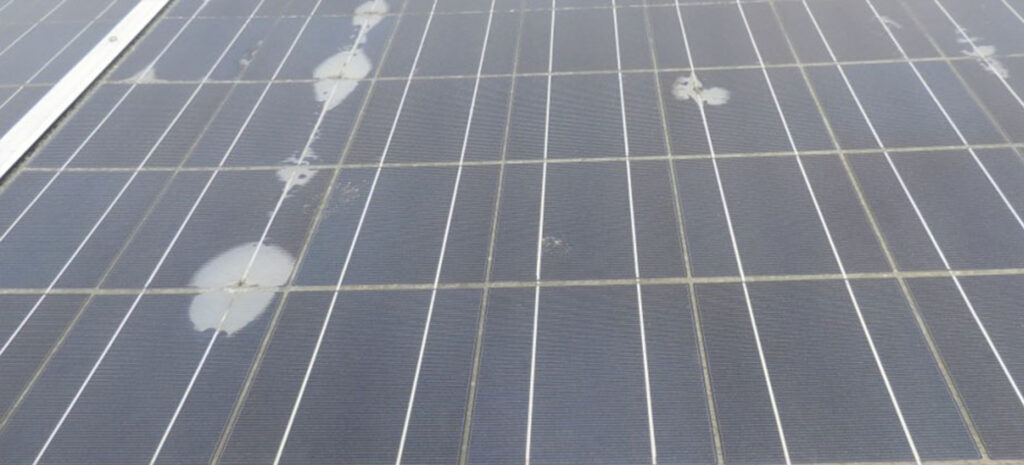
How can EVA material resist aging?
1. Add inorganic particles to resist aging
Adding inorganic particles is one of the ways to improve the aging resistance of EVA. The acid-functionalized graphene nanosheets are introduced into EVA as a reinforcement, and the prepared EVA/GNP composite film encapsulates the dye-sensitized battery, which can prolong the service life of the device.
Adding rare earth Y2SiO5: Ce3+, Yb3+ into EVA can improve the thermal conductivity and adhesion of EVA without affecting the light transmittance and electrical insulation, so that oxygen and moisture cannot enter, thereby improving the thermal stability of the packaging material sex.
Graphene oxide is used to prepare EVA/GO nanocomposite membrane. This membrane has a good waterproof structure and is impermeable to oxygen, so the anti-aging performance is improved. The polar groups of graphene oxide and vinyl acetate groups group interaction, which improves the interfacial cohesion. In addition, adding BN, SiC, ZnO and other highly thermally conductive inorganic particles to the EVA packaging material can prevent the local heat accumulation of the photovoltaic module, thereby improving the thermal stability of the module.
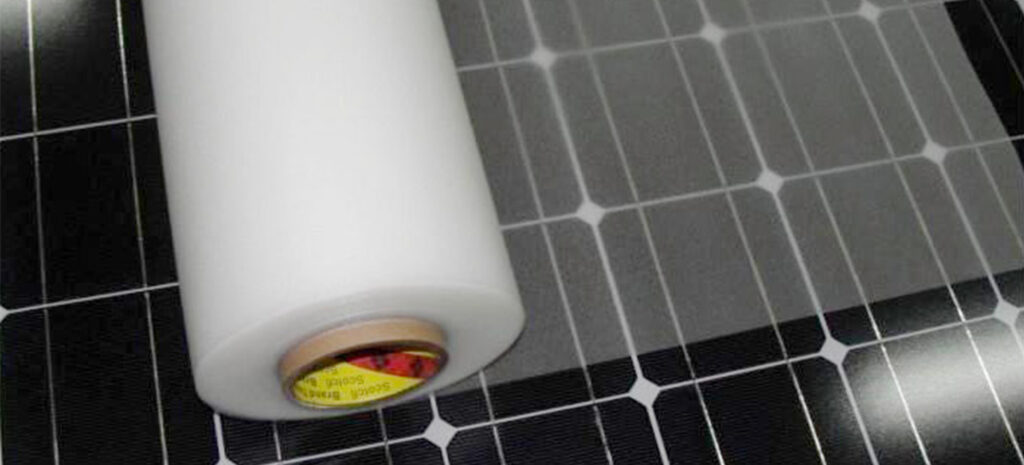
2. Add anti-aging additives
Additives such as antioxidants and light stabilizers can reduce the oxidative decomposition speed of EVA packaging materials, improve thermal oxygen aging resistance, ultraviolet aging resistance, and damp heat aging resistance. Polymer materials absorb light energy, causing auto-oxidation reactions, resulting in polymer degradation, discoloration, brittleness, and performance degradation of the product, making it unusable. Generally, composite stabilizers can reduce the aging rate of EVA more than single stabilizers due to the synergistic effect between components.
3. Cross-linked anti-aging
Cross-linking has been proved to be an effective method to improve the aging resistance of EVA film, and cross-linking can make EVA form a stable network structure.
There are many methods of EVA cross-linking. Organic peroxide is the most commonly used cross-linking agent. At a certain temperature, the free radicals generated by the decomposition of organic peroxide attack the EVA molecular chain, resulting in a free radical chain, and the combination of two free radical chains form a cross-linked structure.
The degree of cross-linking is an important technical indicator of EVA packaging materials. If the cross-linking is too high, EVA will become brittle and cannot resist external impacts and will not protect the silicon wafer. If the cross-linking is too low, the aging resistance will be reduced, and it is advisable to control the degree of cross-linking at 70%.
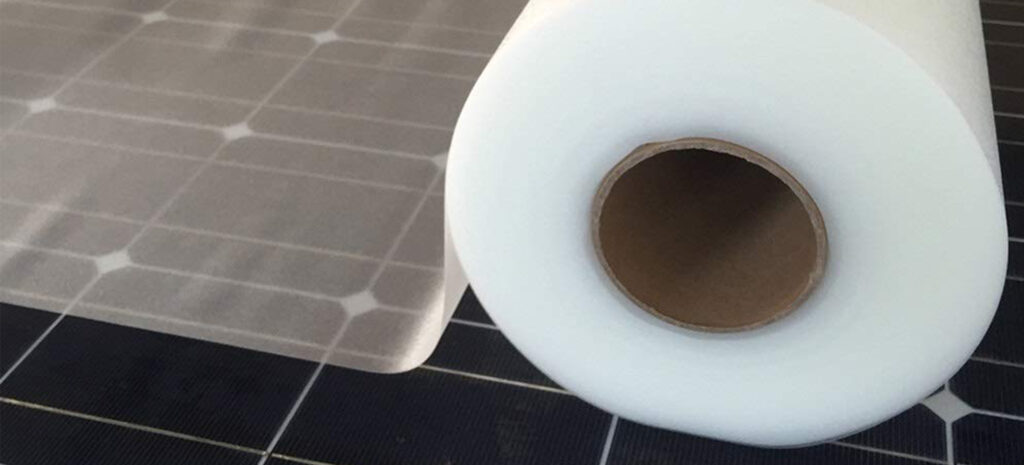
We are a module manufacturer founded in 2008 with rich professional experience. If you are interested in learning more about photovoltaics, we are here to help you with any help you need. Contact us now and get a quote.

